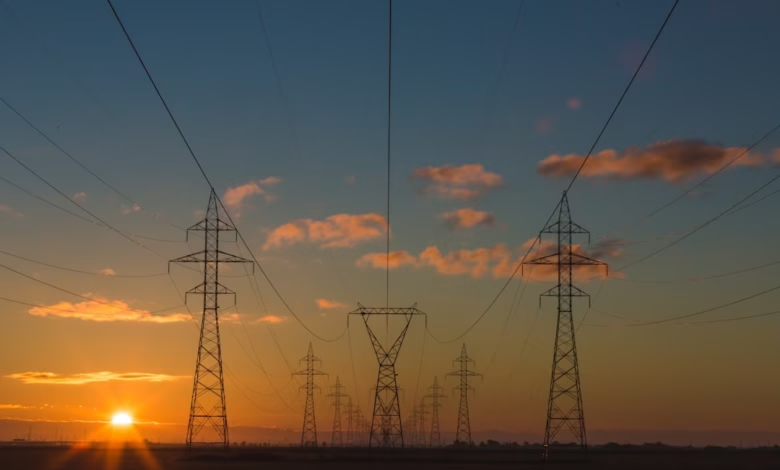Navigating the Energy Transition: Embracing Renewable Energy for a Sustainable Future

As the world grapples with the urgent need to address climate change, the energy transition from fossil fuels to renewable energy sources has become a pivotal focus for policymakers, businesses, and consumers alike. This shift is not merely a trend; it represents a fundamental transformation in the way we generate, distribute, and consume energy. With increasing innovations in solar power, wind energy, and hydropower, the renewable energy sector is witnessing unprecedented growth, reshaping global energy markets and driving investment in green energy initiatives. Furthermore, advancements in energy storage and smart grids are enhancing energy efficiency and security, making renewable options not just viable, but essential for a sustainable future.
In this article, we will explore key aspects of the energy transition, starting with the critical role of renewable energy in shaping global energy trends and innovations. We will delve into the energy policy and investment strategies that are crucial for steering economies away from fossil fuels and towards a greener paradigm. Finally, we will examine the latest advancements in energy storage solutions and smart grids, which are vital for enhancing energy efficiency and ensuring that renewable energy systems can meet the demands of the 21st century. Together, these elements form a comprehensive understanding of how we can achieve energy security while combating climate change and promoting sustainable economic growth.
- 1. The Role of Renewable Energy in the Global Energy Transition: Trends and Innovations
- 2. Energy Policy and Investment Strategies for a Sustainable Future: From Fossil Fuels to Green Energy
- 3. Advancements in Energy Storage and Smart Grids: Enhancing Energy Efficiency and Security in Renewable Energy Systems
1. The Role of Renewable Energy in the Global Energy Transition: Trends and Innovations
The global energy transition is a critical movement aimed at reducing reliance on fossil fuels and embracing renewable energy sources. This transition is not just a trend; it represents a significant shift in energy markets influenced by climate change, technological advancements, and evolving energy policies. As countries strive for energy security and sustainability, renewable energy has emerged as a cornerstone of this transformation.
In recent years, there has been a notable increase in the adoption of renewable energy technologies, such as solar power, wind energy, hydropower, and bioenergy. These sources are becoming increasingly cost-effective and efficient, sparking a wave of energy innovations. For instance, advancements in energy storage technologies, such as batteries, are crucial for addressing the intermittency challenges associated with solar and wind energy. This enhanced energy storage capability allows for better integration of renewables into smart grids, facilitating distributed energy solutions that empower local communities.
Hydrogen energy is also gaining traction as a versatile energy carrier, particularly in sectors that are hard to decarbonize. When produced through green methods, hydrogen can significantly contribute to reducing carbon emissions. Similarly, thermal energy solutions are being explored to improve energy efficiency across industries, which complements the efforts to phase out fossil fuels.
The role of offshore energy, including wind and solar farms, is expanding as nations invest in their infrastructure to harness abundant renewable resources. This shift not only enhances energy exports but also strengthens energy imports, creating a more resilient energy economy. Additionally, carbon capture technologies are being developed to mitigate the environmental impact of remaining fossil fuel usage, ensuring a smoother transition towards cleaner energy sources.
As global energy trends continue to evolve, energy investments are increasingly directed towards renewable projects, signaling a robust commitment to the energy transition. Policymakers are also recognizing the importance of adapting energy policies that support renewable growth and innovation, fostering an environment conducive to research and development (R&D) in clean technologies.
In conclusion, renewable energy is pivotal in the global energy transition, supported by emerging trends and innovations that drive energy efficiency and security. The move from fossil fuels not only addresses climate change challenges but also opens new avenues for economic growth and energy independence. As countries work towards achieving their energy goals, the collaborative efforts in energy transportation and smart grid technologies will be essential in shaping a sustainable future.
2. Energy Policy and Investment Strategies for a Sustainable Future: From Fossil Fuels to Green Energy
The shift from fossil fuels to renewable energy sources is not merely a technological challenge; it is fundamentally intertwined with effective energy policy and investment strategies. As countries strive to combat climate change and promote energy security, the integration of green energy into the global energy markets has become a pivotal focus.
Energy policy plays a crucial role in facilitating the energy transition. Governments are increasingly recognizing the need to create frameworks that support the development of renewable energy, such as solar power, wind energy, and hydropower. These frameworks often involve incentives for energy investment, including tax breaks or subsidies for renewable projects. By aligning policies with global energy trends, policymakers can stimulate the growth of energy innovations that enhance energy efficiency and reduce reliance on fossil fuels.
Investment strategies must also evolve to prioritize sustainable projects. Energy investment in technologies like energy storage and smart grids is essential for managing the variability of renewable sources and ensuring a reliable supply. Additionally, developing hydrogen energy and bioenergy can diversify energy resources and provide cleaner alternatives for sectors that are difficult to electrify. For instance, innovations in carbon capture technologies can further mitigate emissions from existing thermal energy plants, allowing for a more gradual transition.
Furthermore, the role of nuclear energy should not be overlooked. As a low-carbon energy source, nuclear energy can complement renewables in achieving energy security while meeting the growing demand for electricity. Countries must evaluate their energy imports and exports to ensure a balanced energy economy that supports both local and global energy needs.
Distributed energy systems, including offshore energy and electric vehicles, are also transforming the landscape of energy transportation and consumption. By investing in these technologies, we can create a more resilient energy infrastructure that adapts to changing demands and enhances energy security.
In conclusion, a robust energy policy combined with strategic investments is vital for facilitating the transition from fossil fuels to renewable energy. By focusing on energy efficiency, energy R&D, and innovative solutions, countries can not only address climate change but also foster a sustainable future that prioritizes green energy and energy independence. The collaborative efforts among governments, private sectors, and communities will be essential to achieve a successful energy transition that benefits all.
3. Advancements in Energy Storage and Smart Grids: Enhancing Energy Efficiency and Security in Renewable Energy Systems
The transition from fossil fuels to renewable energy sources is a complex process that requires innovative solutions to enhance energy efficiency and security. A critical component of this transition is the development of advanced energy storage systems and smart grids, which are essential for managing the variable nature of renewable energy sources such as solar power and wind energy.
Energy storage technologies, such as batteries and pumped hydro storage, play a pivotal role in balancing supply and demand within energy markets. By storing excess energy generated during peak production times, these systems ensure that renewable energy can be accessed even when generation is low, thus enhancing overall energy security. For instance, advancements in lithium-ion batteries have significantly improved the feasibility of electric vehicles and residential energy storage systems, allowing households to utilize green energy more effectively.
Smart grids are another crucial advancement in the energy transition. They utilize digital technology to monitor and manage energy flows, enabling a more efficient distribution of energy across various sources, including nuclear energy, hydropower, and bioenergy. By integrating distributed energy resources into the grid, smart grids enhance energy efficiency and support the deployment of renewable energy solutions. These technologies enable real-time data analysis, which optimizes energy transportation and minimizes losses, contributing to a more resilient energy infrastructure.
Furthermore, energy policy plays a significant role in fostering these advancements. Governments and organizations are investing in energy R&D to explore innovative solutions for energy storage and smart grid technologies. Initiatives that promote carbon capture and hydrogen energy are also gaining traction, as they complement renewable energy initiatives and contribute to the overall goal of reducing carbon emissions.
In summary, the advancements in energy storage and smart grids are pivotal in the energy transition from fossil fuels to renewable energy sources. These innovations not only enhance energy efficiency and security but also align with global energy trends aimed at combating climate change and promoting sustainable energy practices. As we continue to invest in these technologies, the potential for a clean, reliable, and efficient energy future becomes increasingly attainable.
In conclusion, the energy transition from fossil fuels to renewable energy sources is not just a necessity for combating climate change; it is a pivotal shift that encompasses a wide array of innovations and strategic investments. As we have explored, renewable energy plays a crucial role in shaping global energy trends, with advancements in solar power, wind energy, and hydropower paving the way for a more sustainable future. Energy policy must evolve to support these innovations, ensuring that investment strategies align with the goals of energy efficiency and security.
Moreover, the integration of energy storage solutions and smart grids enhances the reliability of renewable energy systems, making them more resilient and efficient. As we move towards a future dominated by green energy, technologies like hydrogen energy and carbon capture will be essential in mitigating the impacts of climate change and improving energy economics. The transition also brings opportunities for energy exports and imports, fostering a robust global energy market.
Ultimately, the commitment to a renewable energy future requires ongoing energy R&D and collaboration across various sectors, ensuring that we harness the full potential of distributed energy systems and thermal energy solutions. By embracing these advancements, we are not only safeguarding our planet but also laying the groundwork for a sustainable and economically viable energy landscape. The path to a greener future is clear, and it is imperative that we act now to realize the full benefits of this energy transition.





